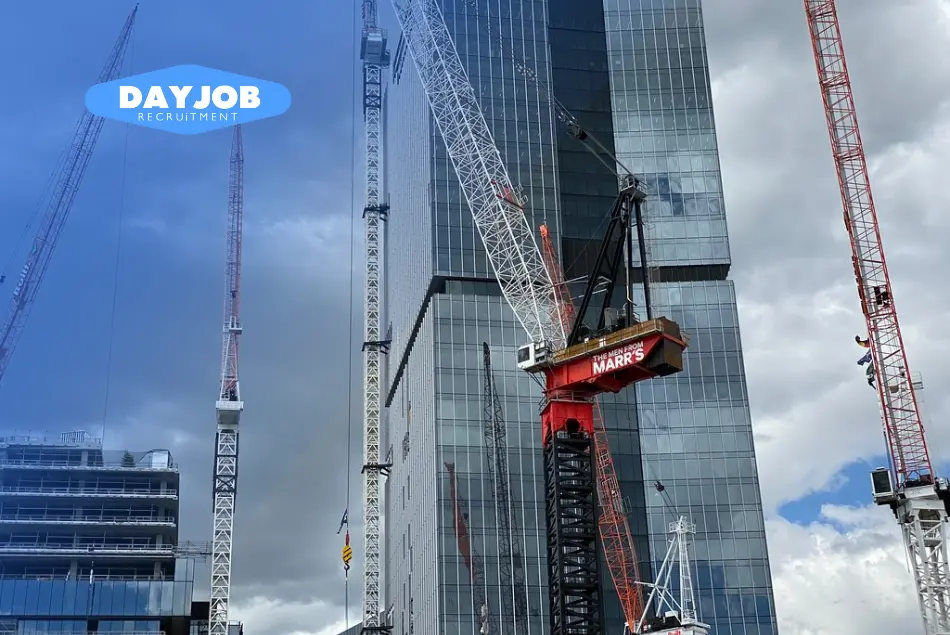In the aftermath of the pandemic, the global steel industry demonstrated a solid recovery, registering a 3.7% growth year-on-year in 2021, propelled by a vigorous rebound in the global economy. As of 2023, Australian steel production faces a set of hurdles, marked by a forecasted dip in revenue as outlined by IBIS World. Yet, it’s crucial to highlight the inherent resilience and prospective growth within particular market segments of steel industry.
A case in point is the steel rebar market in Australia, which is on an ascendant path. It is projected to experience a Compound Annual Growth Rate (CAGR) of 2.7% from 2022 through to 2030, spurred by an uptick in non-residential construction activities.
This trajectory implies that certain segments of the market are well-positioned for growth, shedding a positive light on the potential for recuperation and further growth in the broader steel industry.
The Australian Department of Industry, Science, Energy and Resources (Department of Industry) projects world steel output to grow by 2.2% in 2022. However, energy shortages, production-halting in Ukraine and global sanctions on Russia place significant risks to the predicted forecast of production.
According to the World Steel Association, global production of crude steel was at a 5.8% decrease in March 2022 compared to March 2021. Russia & Other CIS + Ukraine experienced a 19.2% decrease in the same period.
Globally, China is the largest producer of steel and is Australia’s largest supplier. However, in 2021 China’s steel production had its largest drop in over 15 years by 8.7% in the September quarter of 2022 due to pandemic outbreaks and challenges in its property sector. Production is expected to flatten as the communist nation aims to achieve net-zero emissions by 2060 and reduce greenhouse gas emissions.
As nations prioritize to reduce greenhouse gas emissions globally, the steel industry will likely see further shifts towards more sustainable production methods and technologies.
Key Takeaways
- Certain market segments like steel rebar in Australia are expected to grow, with a CAGR of 2.7% through to 2030, indicating resilience and potential for growth.
- Global challenges, including energy shortages and geopolitical tensions, impact production forecasts, yet world steel output is projected to grow.
- Australia benefits from increased global commodity prices due to the Russia-Ukraine conflict, enhancing its iron and steel exports.
- Improving trade relations between Australia and China could stabilize the demand and supply of essential commodities for steel production.
- The Australian steel industry is adopting sustainable practices, aligning with global environmental standards for decarbonization.
Local Steel Industry in Australia
Australian steel industry has been producing steel since 1915 and established two major hubs in the country: Whyalla, South Australia and Illawarra, New South Wales.
Whilst production in Australia has decreased overall, the steel industry continues to contribute to Australia’s employment sector and is an exported commodity. Although steel is manufactured locally, Australia still relies on international markets for about one-third of its steel.
Domestically, the highest demand for steel comes from the various manufacturing industries, construction and mining sectors. Globally, the construction steel industry accounts for more than 50% of the world’s demand.
The Australian Department of Industry has indeed projected that world steel production will grow at an annual rate of 1% from 1.99 billion tonnes in 2022 to 2.10 billion tonnes in 2027.
Moreover, according to Trading Economics, the current Russia-Ukraine conflict means that Australian iron and steel exports have shot up from 60 million in February 2022 to 108 Million in March due to the Russia-Ukraine conflict.
Australia’s ties to both Russia and Ukraine concerning this commodity are not closely linked. However, the global shift away from the Eastern European region has proven to be advantageous for the Australian economy and industrial purposes.
How Will the Conflict Between Russia and Ukraine Impact Australia?
The Australian Strategic Policy Institute (ASPI) has highlighted the geopolitical implications of Russia’s invasion of Ukraine, emphasizing that the conflict’s ripple effects extend to the Asia-Pacific region, including Australia. The economic repercussions on Australia are unfolding as the conflict continues into 2023.
Though not directly impacted, the ripple effects of the conflict are noticeable in Australia. The assault on Ukraine has caused global disruptions, influencing commodity prices, which in turn affects Australia due to its commodity-driven economy. There’s been a surge in global oil, wheat, nickel, iron ore, and gas prices since the invasion, driven further by sanctions imposed on Russia by Western nations.
While Australia may benefit from higher commodity prices in the short term, the longer-term outlook is concerning. S&P Global anticipates that the Australian economy will face slower growth and higher cost-of-living pressures, with inflation expected to average 3.9% this year, a significant uptick from earlier forecasts.
The economic growth is now expected to be slightly higher at 3.6% for the current year, but the forecasts for 2023 and 2024 have been downgraded to 2.6% and 2.2% respectively. In addition, the Australian Department of Steel Industry had projected that disruptions caused by the Russian invasion could lead to an increase in steel prices, reflected in earnings for 2021-22 and 2022-23.
Furthermore, the Russia-Ukraine conflict has led to heightened inflation, not just in Australia but globally, posing a risk of tighter monetary policy which may impact global financial markets and economic recovery. Australia continues to support Ukraine politically and financially through humanitarian and military aid, aligning with the global stance against Russia’s actions in Ukraine.
The Russia-Ukraine conflict is indeed having an economic impact on Australia, largely driven by global commodity price shifts and the consequent inflationary pressures, with the potential for more significant effects should the conflict continue to escalate or global sanctions intensify.
Where Does China Fit In Australian Steel Production?
Diplomatic tensions between Australia and China have seen fluctuations in trade relations. Recently, trade relations between China and Australia have shown signs of improvement with a virtual meeting held on February 6, 2023, between the trade ministers of the two nations, marking the first such interaction since 2019 and representing a step towards stabilizing relations.
In 2023, China’s steel industry is anticipated to remain robust, driven by pent-up demand in various sectors like automotive, shipbuilding, and real estate. This rising demand is expected to boost imports of iron ore and coking coal from countries including Australia, a major supplier of these bulk commodities.
The stable demand for steel in China is poised to encourage strong imports of iron ore and coking coal, essential for steel production, from Australia.
In 2022, Australia exported a total of 729.32 million tons of iron ore to China, marking a 5.1% increase year-on-year, and constituting around 66% of China’s total iron ore imports.
Increased steel production in China has been pushing iron ore prices higher, benefiting iron ore miners like BHP and Rio Tinto, but resulting in lower margins for Australian steel makers including BlueScope.
Despite the Chinese government’s edict to curb steel production to reduce carbon emissions, production at Chinese steel mills is expected to escalate.
The surge in production has been supporting strong iron ore prices, although a recent drop was noted. The enhanced production in China is in response to domestic demand signals and is anticipated to continue despite global inflationary pressures and high prices for bulk commodities.
The global ambition towards net-zero emissions continues to reshape the landscape as companies adapt to environmentally-friendly methods of steel production.
China’s commitment to reducing emissions by 2060 may lead to moderated steel production levels in the long-term, although recent trends suggest a ramp-up in production to meet domestic demand.
On the global front, steel production is a critical component supporting modern society, and environmentally sustainable practices in this sector are becoming increasingly paramount.
Sustainability and Green Practices in Steel Manufacturing
The Australian steel industry is increasingly aligning with global environmental standards by adopting sustainable and green manufacturing practices. Key initiatives include:
- Recycling Efforts: Australia’s steel industry is at the forefront of recycling, with many companies actively recycling steel scrap. This not only reduces waste but also significantly cuts down on the environmental impact associated with raw material extraction.
- Energy-Efficient Manufacturing: The industry is shifting towards more energy-efficient manufacturing processes. Companies are investing in modern technologies that reduce energy consumption during production, thus lowering greenhouse gas emissions.
- Renewable Energy Integration: A growing trend in the Australian steel sector is the use of renewable energy sources. Solar and wind energy are increasingly being harnessed to power steel manufacturing plants, reducing reliance on fossil fuels and minimizing carbon footprints.
These practices are not just a response to environmental concerns but also a strategic move towards cost-effective and future-proof manufacturing.
Future Outlook and Predictions for the Steel Industry
Looking ahead, the Australian steel industry faces both challenges and opportunities:
- Growth in Construction and Manufacturing: Experts predict a steady demand for steel in the construction and manufacturing sectors, driven by infrastructure projects and urban development. This demand is expected to fuel growth in the steel industry.
- Adaptation to Market Challenges: The industry must navigate global market fluctuations, including raw material prices and international trade dynamics. Adapting to these challenges through flexible and innovative practices will be key to maintaining market stability.
- Technological Advancements: The future of the steel industry is also closely tied to technological advancements. The adoption of cutting-edge technologies in production, supply chain management, and environmental conservation will play a crucial role in shaping the industry’s future.
- Renewable Energy Sector: The growth of the renewable energy sector presents a significant opportunity for steel manufacturers, given the extensive use of steel in renewable energy infrastructure.
- Environmental Regulations and Sustainability: The global push towards decarbonization poses both a regulatory challenge and a cost implication for steel manufacturers, requiring them to invest in cleaner, more sustainable production technologies.
Current Steel Prices in Australia

Image Source: freepik
To proceed with accessing detailed reports or forecasts for Australian steel prices, especially for the year 2024, MEPS (Metal Expert Price Services) provides detailed market analysis and delivers unique and competitive insights into steel prices, production, and consumption. It assists businesses of all sizes with the most complete steel market analysis available globally.
Services offered include:
- Independently researched benchmark steel prices and indices for major carbon steel and stainless steel products.
- 12-month regional steel price forecasts across a range of products.
- Monthly steel reviews offering detailed market analysis of flat and long products in 28 countries.
- The latest 5-year forecasts for international steel production and prices.
MEPS likely offers this data through their subscription services or specific reports. Visit here.
Summary
The Australian steel industry displays resilience amidst global disruptions, notably benefiting from the Russia-Ukraine conflict through increased commodity prices and heightened iron and steel exports. Despite initial hurdles, segments like the steel rebar market are on a growth trajectory, thanks to a rise in non-residential construction activities.
Renewed trade interactions with China, a significant steel and iron ore trade partner, are also a positive sign. These factors, combined with Australia’s long-standing steel production capabilities, hint at a promising outlook for certain market segments within the steel industry.
This unfolding scenario showcases the potential for recovery and growth in Australia’s steel sector, driven by both domestic market dynamics and international partnerships.
Dayjob Recruitment stands as Australia’s leading recruitment agency, with a niche in the manufacturing and construction sectors. Engage with us for your permanent staffing needs. Our unique approach ensures you’re billed only after your new employee commences. Contact us today to get started!
Is your company ready to find the right talent?
FAQs
What Is the Significance of Australia in the Global Steel Manufacturing Sector?
Australia plays a pivotal role in the global steel manufacturing sector, primarily due to its vast iron ore deposits and a strong focus on locally manufactured steel. The Australian Steel Industry and leading steel companies, such as Bluescope Steel, have been at the forefront of ensuring superior steel production, making Australian steel far superior in quality.
How Has the History of Steel Production Evolved in Australia?
Australia began its journey in the steel industry with the establishment of iron smelting at Iron Knob. Over the years, more steelworks opened in regions like Port Kembla and Victoria, transforming the budding steel industry. A brief history reveals the evolution from producing pig iron using blast furnaces to adopting advanced technologies that ensure high tensile strength in the steel produced.
Why Is Australian Steel Considered Ecologically Sustainable?
Australian steel is renowned for being one of the most recycled products globally. The manufacturing sector in Australia places a significant emphasis on renewable energy and sustainable practices. This commitment ensures that the steel products are not only of high quality but also ecologically sustainable, making them ideal for various construction applications.
How Do Steelworks in Australia Ensure the Quality of Their Products?
Quality is paramount in the Australian steel industry. With the presence of large iron ore deposits and access to premium coking coal, steel producers can ensure very high tensile strength in their products. Moreover, the Australian Bureau provides professional advice and guidelines to manufacturers, ensuring that poor quality is minimized and the end product is of the highest standard.
What Does the Future Hold for the Australian Steel Industry in the Next Five Years?
The future looks promising for the Australian steel industry. With continuous advancements in technologies, a shift towards renewable energy in the manufacturing sector, and the increasing demand for high-quality, locally manufactured structural steel, Australia is poised to remain a global leader. The focus will also be on expanding the range of steel products and exploring innovative applications to cater to the ever-evolving construction and infrastructure sectors.
Are There Specific Regulations Governing Construction Projects in Australia?
Yes, construction projects in Australia are governed by a myriad of regulations to ensure safety, quality, and adherence to environmental standards. These regulations are enforced by federal and state authorities, creating a structured framework within which construction businesses operate.
What Are the Prospects for Entrepreneurs Looking to Venture Into the Construction Business?
The prospects are promising for entrepreneurs, especially those who are inclined towards adopting innovative, sustainable practices and leveraging technological advancements to cater to the evolving demands of the construction market. With the right strategies and adherence to the regulatory landscape, entrepreneurs can carve a niche for themselves in the bustling construction business arena.
Are you a job seeker looking for your next big opportunity? Click below to see how we can assist you in finding the perfect role.
Speak to the team!
Dayob recruitment has qualified and accredited staff willing to move
interstate to regional areas. Reach out to find the candidate best
suited for your company.
Contact Us








